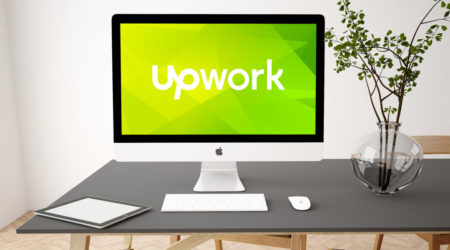The end of the year is upon us, but that doesn’t mean it’s too late to save a little bit of cash next spring on your freelance business taxes.
We want to help you rack up as many tax deductions (free money!) as possible before the end of the year. To help you do just that, here’s a list of last-minute United States tax deductions commonly available to creative entrepreneurs.
We’ve also included the IRS* tax form to list each deduction on (you can find links to download all of the necessary forms at the bottom of this post).
*The Internal Revenue Service (IRS) administers and enforces United States federal tax laws. For other countries please refer to your government documentation.
Money Note: If an extra $1K–$5K/month would change your 2026 goals (debt, savings, travel, freedom), you’ll want to catch this: free live workshop from a freelancer who’s earned $4M+ online. No fluff. No gimmicks. A real roadmap. 👉 Watch the training or save your seat here »
No matter where you’re located, make sure you’re deducting as much as you can before the year ends!
Online services
Did you know any fees paid for online services related to your work are tax-deductible? Anything you use to manage or grow your business can be deducted saving you major cash come tax time.
Examples and options include:
Invoicing Software
If you’re still invoicing using spreadsheets or InDesign docs, it’s time to upgrade to a better invoice app. And doing it before the year’s end could mean major savings for you. Here are our top recommendations:
Project Management Software
There are lots of great project management software options for freelancers & entrepreneurs. Signing up for an annual plan before the end of the year will guarantee your biggest deduction (sometimes as high as $400 or more).
Here are a few we recommend grabbing before the end of the year:
Domain registrations & Web Hosting
If you’ve been debating whether to register that new domain or not, now’s the time to do it since you’ll be able to reap tax deductions if you pull the trigger before the end of the year.
We recommend the following registrars:
- For any domain extensions, use Bluehost — if you get hosting, the registration is actually free.
- For .design domains, use Flywheel — use this link and get a domain for $13/mo.
Bookkeeping Software & Services
Keeping your finances organized is another great way to improve your business next year. We recommend the following:
- Bench — Bench pairs you with a team of bookkeepers and a snazzy app to ensure you know how your business is doing at all times.
Other Software
There are loads of other software you can get deductions for. Here are a couple more common examples:
Keep in mind, you may need to amortize these expenses as start-up costs if your business is new.
Home office
If you work from home, you can take advantage of the home office deduction. To qualify for this deduction, you need to meet three conditions:
- Exclusivity: Your home office must only be used for business activities. Have clear boundaries between this area and the rest of your home.
- Regularity: Use this space on a regular and predictable schedule for your work.
- Precedence: The majority of your time spent on work-related projects must be in this area.
There are two ways to calculate this deduction: the simplified method and the standard method.
Simplified method – Schedule C (1040)
For the simplified method, create a standardized deduction of $5 per square foot of your home office, with up to a maximum of 300 square feet.
Standardized method – Form 8829
The standardized method requires you to calculate the percentage of your home office by dividing the area used for business by the total area of your home.
Advertising
Form: Schedule C (1040)
The cost of promoting your business is a deductible expense. Keep track of expenses related to business cards, printed promotional materials, online advertising, project submissions and contests.
As long as these expenses are necessary and ordinary to promote your business, they are generally fully deductible.
Education
Form: Schedule C (1040)

Expenses you incur for education that add value to your business or increase your skill level are fully deductible. Examples include:
- Classes to improve skills in your field
- Seminars and webinars
- Workshops
- Subscriptions to trade or professional publications
- Educational books
Costs that don’t qualify in this category are expenses related to education for a new career or education that is not related to your current work.
Computer and phone
Form: Schedule C (1040)
If you use your computer and phone solely for business purposes, you can fully deduct these costs as a business expense. However, if you use them for both business and personal uses, you can only deduct the business usage percentage of the total cost.
Depreciated costs – Schedule C (1040)

Computers and phones are also depreciated costs, and you can claim the depreciation of your computer and phone under “Depreciation.”
Note: calculating depreciated costs can be tricky to get right, so it’s best to work with an accountant or tax professional when claiming this deduction. Learn more about this topic in Bench’s guide to understanding depreciation.
Internet and phone calls
Form: Schedule C (1040)
The cost of your internet connection is a deductible expense. This cost is fully deductible only when it’s purely a business internet connection. A home-based internet connection is only partially deductible based on the percentage used for business purposes.
Calculate this as the percentage of your total internet bill used for business purposes. It may be helpful to record the number of office hours you worked.
The same applies to the cost of your phone bill; you can only deduct a percentage of the total cost of your cell phone bill based on how much it was used for business purposes. For instance, if you use your cell phone 60% for business and 40% for personal purposes, you can deduct 60% of the cost of your cell phone plan as a business expense.
Keeping an itemized phone bill is a good way to support your claim should you ever be audited.
Travel
Form: Schedule C (1040)
Travel expenses are tax deductible as long as they are ordinary and necessary for your business.
To qualify for the deduction, the business trip must be outside of your tax home, which is defined as the city or area in which you conduct your business. You also need to be traveling away from your tax home for longer than a normal day’s work, requiring you to sleep or rest en route.
It’s critical that you maintain well-kept records of all business travel expenses. This includes receipts that detail the amount of each expense you’ll claim, the dates of your trip, details of your trip (for example, who you met, the business purpose of the trip), and a mileage log if you drove your own vehicle.
The following is a list of deductible travel expenses, approved by the IRS:
- Travel by plane, bus, train, or car to and from your destination
- Use of your car at a business location
- Parking and toll fees
- Cost of taxis or other transportation methods on your business trip
- Meals and lodging during your business trip
- Tips
- Dry cleaning
- Shipping of baggage and display materials to your destination
Bad business debt
If you weren’t paid by a client during the tax year, you may be able to claim this loss as bad business debt. You must be able to prove to the IRS that you took all reasonable steps to collect the debt, but failed to recover the payment, so keep proper records of all debt collection attempts you’ve made to recover unpaid contracts.
Bad debts can be partially or fully deducted from a business’ gross income. While the IRS provides a full rundown on claiming bad business debt, unless you’re into tax law and excited by factoring complicated deductions, claiming business bad debt is another tricky area where we strongly suggest you work with an accountant to get right.
Insurance
The cost of business insurance and health insurance is, in most cases, fully deductible. Here’s the fine print:
Business insurance – Schedule C (1040)
If your business mainly operates out of your home office, you can deduct the cost of renter’s or homeowner’s insurance off your home office deduction.
Health insurance – Schedule A (1040)
You can deduct the cost of your health insurance plan as an adjustment to income as long as the plan is under your name. If you are eligible to be covered, or if you are currently covered under your spouse’s employer’s plan, you cannot deduct this cost.
Business meals
Form: Schedule C (1040)
You can deduct 50% of qualifying food and beverage costs for your business meal expenses. To qualify, the meal must be a business-related expense so, for every business meal you claim, keep the following records:
- The amount of each expense
- The date and place of each meal
- The business relationship of the person you ate with
A good practice is to record this information on the back of your meal receipt.
IRS forms:
Comments or questions about the best tax deductions for entrepreneurs or freelancers?
Let’s chat through them in the mastermind!
Keep the conversation going...
Over 10,000 of us are having daily conversations over in our free Facebook group and we'd love to see you there. Join us!


